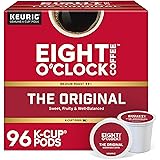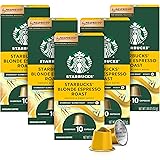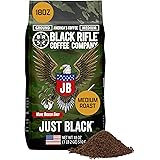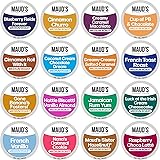Mastering the Art of French Press Coffee: Your Guide to the Best Home Brew
Achieving the optimal cup of **French Press coffee** at home is entirely within reach, transforming your daily ritual from merely good to truly exceptional. As highlighted in the accompanying video, the journey to brewing the **best coffee** begins with foundational principles that elevate flavor and aroma, fundamentally changing your perception of a morning brew. This guide expands on those vital steps, ensuring every cup you brew is a testament to quality and taste.
1. The Non-Negotiable Foundation: Whole Beans and Fresh Grinding
The single most impactful decision in crafting superior **French Press coffee** is starting with whole beans and grinding them fresh for each brew. While pre-ground coffee offers convenience, it rapidly loses its volatile aromatic compounds through oxidation. Research indicates that ground coffee begins to stale significantly within minutes of grinding, with a substantial portion of its flavor profile diminishing within hours.
When coffee beans are ground, their surface area dramatically increases, exposing the inner cellular structure to oxygen. This exposure initiates a rapid degradation of delicate flavor notes, leading to a flatter, less vibrant cup. The speaker’s observation that “even if it’s been ground over a week ago, you can totally taste the difference” underscores this principle, affirming that freshness is paramount.
Investing in a quality burr grinder, as opposed to a blade grinder, is a crucial upgrade. Blade grinders chop beans inconsistently, producing an uneven mixture of coarse particles and fine “dust.” Burr grinders, conversely, mill beans between two abrasive surfaces, resulting in a uniform particle size critical for even extraction. This consistency, achieved in a mere 30 seconds of grinding, profoundly impacts the final cup quality.
2. The Nuance of Bean Selection and Roast Level
Beyond freshness, the origin and roast level of your whole beans significantly shape the character of your **French Press coffee**. As the video details, preferences vary, with some favoring the nuanced profile of a medium roast over the intense, sometimes “burnt” notes of a dark roast, or the undeveloped flavors of a blonde roast.
Medium roasts often present a balanced profile, showcasing the inherent characteristics of the bean’s origin while developing a rich complexity. Beans from regions like Costa Rica, known for their bright acidity and clean finish, exemplify how origin impacts taste. Brands like Aldi’s organic fair trade coffee, available for less than $5 for a 12-ounce bag, demonstrate that high-quality, ethically sourced beans don’t have to break the bank. Exploring single-origin beans from local roasters, such as Blueprint Coffee mentioned in the transcript, further allows enthusiasts to discover unique flavor landscapes and support local businesses.
3. Mastering the Grind for Optimal French Press Extraction
The **French Press coffee** method demands a specific grind consistency: coarse. This is a critical departure from the fine grind typically used for drip coffee makers or espresso machines. The plunger’s mesh filter in a French Press is designed to separate liquid from solid coffee particles; a grind that is too fine will pass through the filter, resulting in a muddy, silty brew.
Furthermore, an overly fine grind can lead to over-extraction, drawing out bitter and astringent compounds from the coffee. The large surface area of fine grounds allows for rapid extraction, which, when coupled with the full immersion of the French Press, can quickly turn pleasant flavors into harsh ones. The video’s suggestion to use “several pulses” rather than continuous grinding with an older model helps achieve this coarser texture, preventing an abundance of unwanted “fines.” This technique ensures that the grounds remain above the filter during the press, preserving the clarity and cleanliness of the final brew.
4. Water Quality and Temperature: The Unsung Heroes of Extraction
Just as critical as the beans themselves is the quality and temperature of the water used for brewing **French Press coffee**. Water constitutes over 98% of your coffee, making its composition a fundamental determinant of flavor. The use of filtered water, such as Berkey water, is recommended to eliminate impurities like chlorine, heavy metals, and sediment that can impart off-flavors and hinder proper extraction.
The ideal water temperature for brewing is typically between 195°F and 205°F (90°C to 96°C), just off the boil. Water that is too cool will result in under-extraction, leading to a sour, weak cup. Conversely, water that is too hot can burn the grounds, yielding a bitter taste. Bringing water to a full boil and then allowing it to rest for approximately 30-60 seconds before pouring ensures it reaches the optimal temperature range for effective flavor compound dissolution without damaging the delicate aromatics of the coffee. This precise temperature control is a hallmark of truly great coffee preparation.
5. The French Press Brewing Method: Steps to Perfection
With freshly ground, high-quality beans and properly heated water, the actual brewing process for **French Press coffee** is deceptively simple, yet requires attention to detail for optimal results.
First, add the coarse-ground coffee to the French Press. For a standard 12-cup press, approximately two full grinder loads (as described in the video) are often used, with a single grinder load sufficing for a 6-cup model. Next, pour the hot water over the grounds, ensuring they are fully saturated but leaving a slight space at the top to prevent spillage when the plunger is inserted. An initial “bloom” phase, where a small amount of water is added to allow gases to escape, is often observed by professional baristas, but a simple stir, as demonstrated, also helps submerge all grounds for even contact.
After stirring to ensure all coffee grounds are fully immersed, place the lid on the French Press and push the plunger down “a touch” to keep the grounds submerged. The recommended steeping time is 4 to 5 minutes. This duration allows for comprehensive flavor extraction without over-extraction, although individual preferences may lead to slight adjustments. A shorter steep, around 2-3 minutes, can yield a lighter body and brighter notes, while extending the steep can intensify the flavor and body, producing a stronger, more robust cup of **French Press coffee**.
6. Choosing Your Vessel: French Press Design and Functionality
The selection of your French Press itself can significantly impact your brewing experience, particularly concerning temperature retention. The video highlights a common dilemma: the trade-offs between a traditional 12-cup glass French Press and a more compact 6-cup stainless steel double-wall model.
Glass French Presses, while aesthetically pleasing and allowing visual monitoring of the brew, typically offer poor thermal retention. As noted, coffee in a glass press can become cold within 10 minutes, necessitating rapid consumption. This contrasts sharply with double-wall stainless steel presses, which provide superior insulation. The double-wall construction creates a vacuum barrier that drastically reduces heat loss, keeping coffee warm for hours. This feature is invaluable for those who enjoy savoring their coffee over an extended period or for multiple servings throughout the morning, ensuring that each pour is as hot and enjoyable as the first. The desire to upgrade to an 8-cup double-wall stainless steel model reflects the understanding that sustained warmth is a key component of the overall coffee experience, making it a critical consideration for the **best coffee** setup.
7. The Unconventional Secret: Fresh, High-Quality Cream
For many, the final touch that elevates **French Press coffee** from excellent to extraordinary is the addition of fresh, high-quality cream. The speaker’s conversion from black coffee to a creamy brew after discovering fresh cream is a powerful testament to its transformative effect. The recommendation is highly specific: non-homogenized milk with cream skimmed directly from the top, or failing that, any high-quality heavy whipping cream. Half-and-half, skim, or whole milk are specifically advised against due to their lower fat content and different mouthfeel.
The richness of heavy cream, particularly non-homogenized varieties, contributes a velvety texture and a luxurious sweetness that perfectly complements the robust flavors of a French Press brew. The fat molecules in the cream bind with certain bitter compounds in the coffee, mellowing them out and creating a smoother, more palatable profile. With approximately 1/5 of the cup being heavy whipping cream, this substantial addition creates a decadent, full-bodied beverage that redefines the coffee experience for many, making it an indispensable element of the “best” cup.
8. Coffee and Lifestyle: Navigating Personal Choices
Coffee consumption intertwines with various aspects of lifestyle, prompting questions about its place during significant life stages. The video addresses a frequently asked question concerning coffee intake during pregnancy and breastfeeding. While the speaker shares her personal experiences of progressively reintroducing coffee in later pregnancies (with her third, fourth, and fifth children born at healthy weights of 8 lbs 7 oz, 8 lbs 10 oz, and 8 lbs 11 oz respectively, all full-term and healthy), this is explicitly presented as a personal anecdote, not medical advice.
It is crucial for individuals to consult their healthcare providers regarding caffeine consumption during pregnancy and breastfeeding. Organizations like the American College of Obstetricians and Gynecologists (ACOG) generally suggest limiting caffeine intake to less than 200 milligrams per day during pregnancy. Studies on the effects of caffeine on pregnancy outcomes present mixed results, with some research indicating potential risks while others find no significant adverse effects within moderate limits. Therefore, personalized medical guidance is paramount when navigating coffee consumption during these periods.
The discussion also touches on alternative preparations like Bulletproof Coffee, indicating a broader interest in optimizing coffee for different dietary or energy needs. Whether it’s the strength of a dark, bold **French Press coffee** or an energy-boosting alternative, the pursuit of the ideal brew remains a deeply personal and evolving journey.







